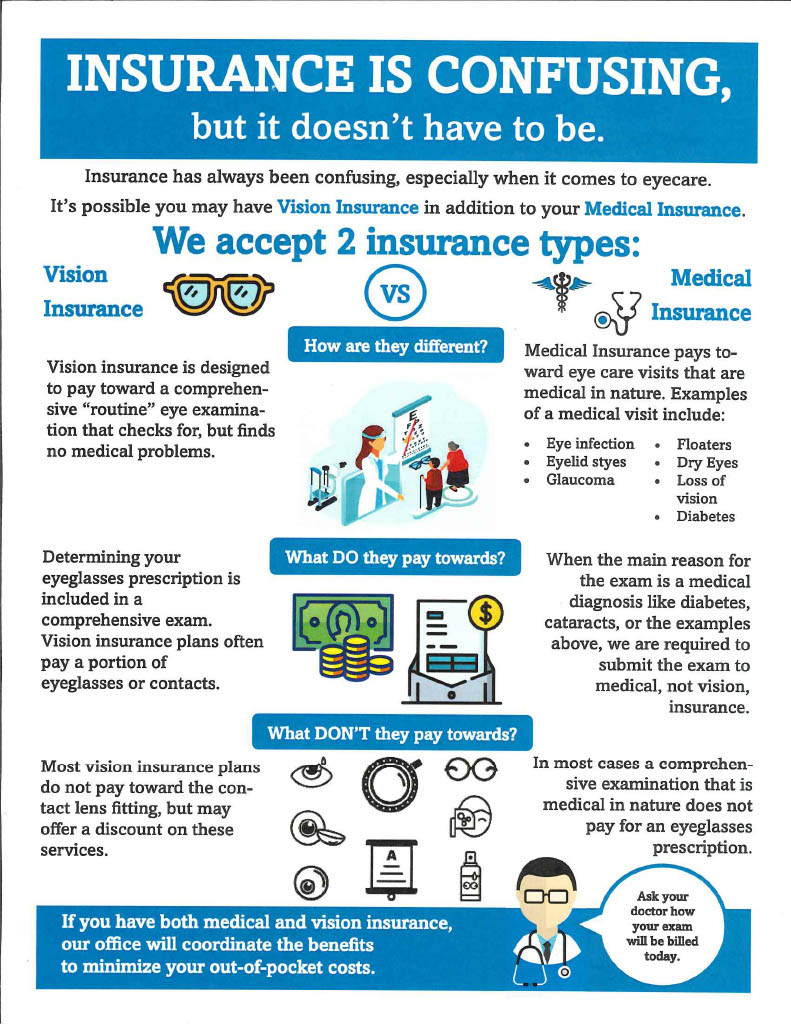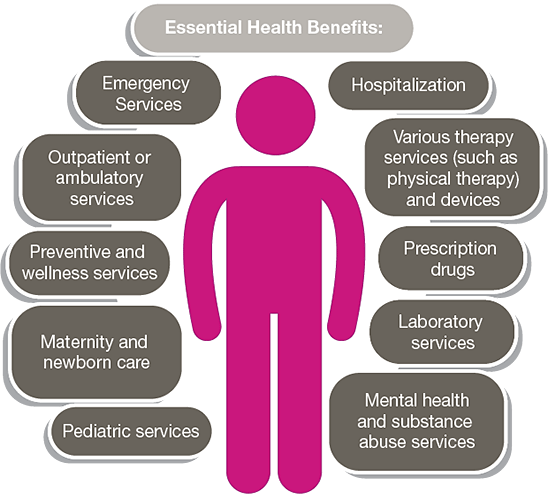What Does Medicare Advantage Agent Mean?
What Does Medicare Advantage Agent Mean?
Blog Article
The Single Strategy To Use For Medicare Advantage Agent
Table of ContentsThe 3-Minute Rule for Medicare Advantage AgentAn Unbiased View of Medicare Advantage AgentMedicare Advantage Agent for Dummies

complies with from perplexing the fairly young age profile of the uninsured with the far better health, typically, of younger individuals. This covers the web link in between health and wellness status and wellness insurance. For those without accessibility to work environment medical insurance, inadequate health is a prospective barrier to buying nongroup insurance coverage because such insurance coverage may be highly valued, exclude preexisting problems, or be merely inaccessible. The number of uninsured Americans is not specifically big and has actually not transformed in the last few years. Seven out of ten participants in a nationally depictive survey believed that less Americans lacked medical insurance than in fact do(Fronstin, 1998). Approximately fifty percent(47 percent )thought that the variety of individuals without medical insurance decreased or continued to be continuous over the last half of the last years(Blendon et al., 1999). This decline of virtually 2 million in the number of people 'without insurance (a decrease
of about 4 percent)is definitely a favorable adjustment. With a softer economic climate in 2000 the most current reported gains in insurance policy coverage may not continue(Fronstin, 2001 ). The decrease in the variety of uninsured will not continue if the economy continues to be sluggish and wellness treatment costs remain to exceed inflation. This is due to the fact that the data were accumulated for a period of strong financial efficiency. Of the approximated 42 million people who were without insurance, almost regarding 420,000(about 1 percent)were under 65 years old, the age at which most Americans come to be eligible for Medicare; 32 million were grownups between ages 18 and 65, around 19 percent of all grownups in this age team; and 10 million were youngsters under 18 years old, regarding 13.9 percent of all children (Mills, 2000). These estimates of the variety of individuals uninsured are generated from the annual March Supplement to the Existing Population Study (CPS), carried out by the Demographics Bureau. Unless otherwise noted, nationwide estimates of individuals without wellness insurance policy and percentages of the populace with different sort of protection are based upon the CPS, one of the most commonly made use of resource of quotes of insurance policy coverage and uninsurance rates. These studies and the estimates they produce are explained briefly in Table B. 1 in Appendix B - Medicare Advantage Agent. These surveys vary in dimension and tasting approaches, the inquiries that are asked about insurance policy
How Medicare Advantage Agent can Save You Time, Stress, and Money.
coverage, and the time period over which insurance coverage or uninsurance is measured(Lewis et al., 1998, Fronstin, 2000a ). Still, the CPS is especially helpful because it creates yearly price quotes relatively rapidly, reporting the previous year's insurance coverage estimates each September, and due to the fact that it is the basis for a constant collection of estimates for greater than twenty years, enabling evaluation of trends in coverage gradually.

Medicare Advantage Agent for Dummies
Over a three-year period beginning early in 1993, 72 million people, 29 percent of the U.S. population, were without coverage for at the very least one month. Within a single year(1994), 53 million people experienced at least a month without protection(Bennefield, 1998a). 6 out of every 10 without insurance adults are themselves utilized. Although functioning does boost the chance that one and one's member of the family will have insurance coverage, it is not a guarantee. Even participants of households with two full-time wage income earners have nearly a one-in-ten opportunity of being without insurance (9.1 percent without insurance price)(Hoffman and Pohl, 2000 ). The partnership between medical insurance and access to care is well established, as recorded later on in this phase. The relationship between wellness insurance policy and wellness outcomes is neither straight neither easy, a comprehensive clinical and wellness solutions research literary works links health insurance policy coverage
to improved better to care, better qualityHigh quality and improved enhanced individual population populace statusCondition For example, the second record, on personal wellness end results for uninsured grownups, is stood for by the innermost circle of the figure, while the 3rd record, on family members health, incorporates the topics of the second record however stresses a different system of evaluation, specifically, the family. The 6th record in the series will offer info regarding strategies and initiatives taken on in your area, statewide, or across the country to attend to the lack of insurance coverage and its negative influences. Degrees of evaluation for checking out the impacts of uninsurance. This conversation of health insurance policy protection concentrates mostly on the U.S. populace under age 65 because essentially all Americans 65 and older have Medicare or other public protection.
It concentrates particularly on those without any type of health insurance policy for any length of time. The problems encountered by the underinsured are in some respects comparable to those encountered by the without insurance, although they are usually much less severe. Uninsurance and underinsurance, nevertheless, entail clearly various policy concerns, and the techniques for resolving them may vary. Throughout this research study and the 5 reports to follow, the major focus gets on individuals without medical insurance and therefore no aid in spending for healthcare beyond what is readily available with charity and safety and security net institutions. Medical insurance is a powerful factor influencing receipt of treatment since both patients and doctors react to the out-of-pocket rate of solutions. Wellness insurance policy, however, is neither needed neither adequate to access to medical services. The independent and straight result of wellness
insurance insurance policy protection access to health services is well established. Others will certainly acquire the health care they need even without health insurance coverage, by paying for it out of pocket or seeking it from carriers who use treatment cost-free or at highly subsidized prices. For still others, health insurance alone does not ensure invoice of care as a result of other nonfinancial barriers, such as an absence of health treatment companies in their neighborhood, minimal accessibility to transportation, illiteracy, or etymological and social distinctions. Formal research study regarding go uninsured populaces in the USA dates to the late 1920s and early 1930s when the Committee on the Cost of Healthcare generated a series of records about funding physician office brows through and hospitalizations. This problem came to be significant as the numbers of medically indigent climbed during the Great Clinical depression. Empirical studies regularly support the web link between accessibility to care and enhanced health results(Bindman et al., 1995; Starfield, 1995 ). Having Your Domain Name a routine resource of treatment can be thought about a predictor of access, rather than a direct step of it, when health and wellness results are themselves made use of as accessibility indicators. This expansion of the concept of access measurement was made by the IOM Board on Monitoring Gain Access To to Personal Health And Wellness Treatment Solutions(Millman, 1993, p. Whether moms and dads are guaranteed shows up to impact whether their kids receive treatment in addition to just how much careeven if the children themselves have protection(Hanson, 1998). The wellness of parents can influence their capability to look after their children and the level of family stress and anxiety. Bothering with their children's access to care is itself a resource of stress and anxiety for parents. 3 chapters follow in this report. Chapter 2 provides an overview of how employment-based wellness insurance, public programs and private insurance plan operate and connect to give comprehensive but insufficient coverage of the U.S. population. This consists of a review of historic trends and public laws affecting both public and personal insurance coverage, a discussion of the interactions amongst the various sorts of insurance coverage, and an examination of why individuals relocate from one program to one more or wind up

Report this page